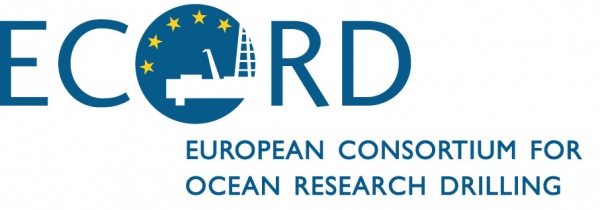ECORD bandisce una call per partecipare alla spedizione IODP 380 NanTroSEIZE Frontal Thrust Borehole Monitoring System
Core-Log-Seismic Integration Investigation at Sea: What is the role of the Nankai frontal prism in tsunamigenic earthquakes & slow slip?
a bordo della Chikyu (12 gennaio - 24 febbraio 2018).
Saranno favorite le application di giovani ricercatori ed esordienti del programma IODP.
Sarà possibile optare per la partecipazione all'intera spedizione (full sesssion) oppure per la short session, di 2 settimane.
In caso di application per la short session è richiesto il certificato Helicopter Underwater Escape Training (HUET), secondo i dettagli specificati nel bando.
Il bando, con i relativi dettagli per le modalità di partecipazione, è riportato di seguito e disponibile al link http://www.ecord.org/expeditions/apply-to-sail/. La documentazione completa dovrà essere trasmessa via email all'ESSAC Office essac@geomar.de e in copia a iodp-italia@cnr.it
La scadenza per presentare le domande di partecipazione è il 31 agosto 2017.
n.b.: Informazioni sulle possibilità di supporto iodp-italia al link http://www.iodp-italia.cnr.it/index.php/it/opportunita/supporto-iodp-italia

CALL FOR APPLICATIONS
for scientists (preference will be given to graduate students, early career investigators, and researchers new to IODP science) based in ECORD Member Countries to participate in
Core-Log-Seismic Integration Investigation at Sea:
What is the role of the Nankai frontal prism in tsunamigenic earthquakes & slow slip?
on-board the Drilling Vessel Chikyu (12 January - 24 February 2018)
DEADLINE to apply: 31 August 2017
New directions building on NanTroSEIZE Stage 1
This investigation at sea will allow scientists to examine the role of the Nankai frontal prism in past tsunamigenic earthquakes and slow slip, using logging-while drilling data from Site C0006 and cores from Sites C0006 and C0007. It will be held onboard D/V Chikyu, concurrently with IODP Expedition 380, NanTroSEIZE Stage 3: Frontal Thrust Long-Term Borehole Monitoring Systems (LTBMS). Participants will build on existing knowledge and address emerging science questions by conducting highdensity sampling and focused integration of core-log-seismic data under the guidance of experienced NanTroSEIZE scientists and technicians, with the opportunity of sampling for additional new shore-based analyses. Specific target intervals are likely to include: (1) shallow turbidite sequences that record uplift in the upper prism, (2) fault gouges and zones of extensive fractures in the middle section of imbricate thrusting, and (3) accreted hemipelagic sediments in the basal hangingwall to the décollement. Research teams will draft proposals to address unanswered scientific questions raised during thematic discussions at the start of the expedition.
This program will emphasize interdisciplinary collaboration, discussion of previous NanTroSEIZE results, and submission of manuscripts to international journals. An overview paper summarizing the investigation at sea is desired. Additional papers might address details related to work performed onboard using Chikyu lab and computing facilities (e.g., SEM, X-ray CT) or samples analyzed on shore.
Structure:
There are two options for participation: short vs. full session. The full session will be for the length of the expedition (ca. 40 days); the short session will last ca. 2 weeks.
Participants choosing the 2-week program will require helicopter underwater escape training (HUET) certification from an approved OPTIO training center. The HUET must be organized by the applicants themselves, costs for this certification would be a responsibility of the participant's National IODP Office and ESSAC, where applicable.
For more information about the expedition science objectives and the RV Chikyu please read the Expedition 380 mini-Prospectus and visit the website for further details. (http://www.jamstec.go.jp/chikyu/e/nantroseize/expedition_380.html)
For the full description of the program and application visit our website
The Application Process is open to scientists in all ECORD member countries.
Please submit to the ESSAC office by email (essac@geomar.de) the following documents until 31 August 2017:
1. Your CV,
2. 1-page description of proposed research objectives and sample/data targets,
3. Letter of endorsement from your advisor or supervisor.
Successful applicants will be notified by ESSAC. Preference will be given to graduate students, early career investigators, and researchers new to IODP science. Successful applicants will be notified by 10 October 2017.
In addition to the ESSAC application, all applicants must inform their national office or national delegate and send a copy of the application documents. The national offices or national delegates can also provide information regarding travel support, post-cruise funding opportunities, etc.
See http://www.ecord.org/about-ecord/about-us/ for a list of the national contact persons.
For further information or questions, please contact the ESSAC Office.
Unsubscribe - Edit your subscription
ESSAC - Science Support and Advisory Committee of ECORD - European Consortium for Ocean Research Drilling
